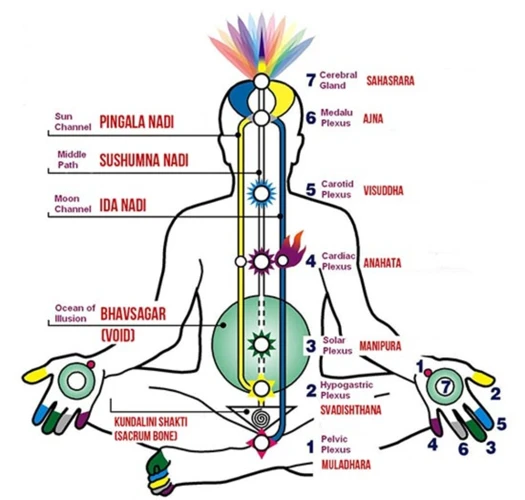As human beings, we’re often in search of a deeper meaning to life. We seek our purpose and strive for spiritual enlightenment. Kundalini Yoga, a time-honored practice, holds a key to this enlightenment. But what is it, and how does it work? And what do the symbols and mantras used in this practice signify? In this article, we will explore the spiritual significance of Kundalini Yoga’s symbols and mantras, the role of chakras in the practice, its physical and emotional benefits, and some helpful tips for practicing this ancient art safely. Are you ready to unlock the secrets of Kundalini Yoga and experience its transformative power? Let’s begin.
Kundalini Yoga
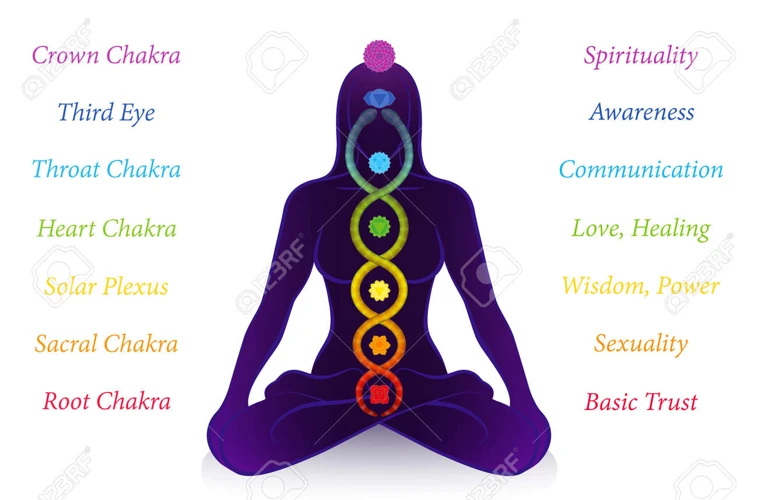
Kundalini yoga is a unique and powerful form of yoga that focuses on the awakening of kundalini energy, which lies at the base of the spine. This ancient practice is designed to help individuals tap into their inner power and potential by working with the body’s subtle energy systems. Using a combination of physical postures (asanas), breathing exercises (pranayama), meditation (dhyana), and other techniques, kundalini yoga has the power to transform both the body and mind. In this section, we will explore what kundalini yoga is and how it works.
What is Kundalini Yoga?
Kundalini Yoga is a spiritual practice that has its roots in ancient India. It involves a combination of physical movements, breathing exercises, meditation, and chanting mantras to generate and move energy through the body. Kundalini Yoga is based on the belief that there is a dormant spiritual energy within every person, called the “Kundalini energy”, which can be awakened through the practice of this yoga. When awakened, this energy rises up through the body, activating the chakras and leading to a state of heightened awareness and consciousness.
The practice of Kundalini Yoga involves:
- Asanas or postures – physical movements and positions, often accompanied by breathing exercises, that activate specific energy channels in the body.
- Pranayama or breathing techniques – specific breathing exercises to help bring more oxygen into the body and to stimulate the flow of energy through the chakras.
- Meditation – a practice of focusing the mind and quietening the thoughts, often accompanied by chanting or visualizations to help focus the mind and increase concentration.
- Mantras – sacred sounds or phrases repeated during meditation or chanting sessions to help focus the mind and connect with the divine.
Kundalini Yoga is unique in that it aims to move beyond the physical practice and into deeper spiritual states. It is not simply a form of exercise, but a comprehensive approach to spiritual development that can lead to self-awareness and transformation. It is believed that the regular practice of Kundalini Yoga can help to remove blockages in the body’s energy system, leading to increased vitality, clarity of mind, and a sense of inner peace.
How Does Kundalini Yoga Work?
Kundalini Yoga is a powerful spiritual practice that combines physical movements, breathing exercises, meditation, and chanting of mantras. Its primary goal is to awaken the Kundalini, which is an energy that lies dormant at the base of the spine. Once awakened, like a serpent uncoiling and rising, this energy travels up through the chakras of the body, purifying and energizing them.
But how does Kundalini Yoga actually work?
Here are some explanations:
- Stimulating the nervous system: One of the ways Kundalini Yoga works is by stimulating the nervous system. The physical movements, such as the repetitive motions of the spine and limbs, create a flow of energy that helps activate the parasympathetic nervous system. This system is known as the relaxation response, which reduces stress and anxiety.
- Increasing oxygenation and circulation: The deep breathing exercises in Kundalini Yoga help increase oxygenation and circulation throughout the body. This has numerous benefits, including increased energy, better digestion, and improved mental clarity.
- Clearing energetic blockages: Kundalini Yoga is designed to clear energetic blockages in the body, allowing the Kundalini energy to flow freely. These blockages can be caused by many things, including physical injury, emotional trauma, or negative thought patterns. By removing these blockages, Kundalini Yoga helps to restore balance and harmony to the chakras and to the whole body.
- Awakening the Kundalini energy: The ultimate goal of Kundalini Yoga is to awaken the Kundalini energy, a powerful force that runs through the body’s energy centers or chakras. This awakening can bring about deep spiritual transformation and heightened awareness. It can also produce physical sensations like tingling or heat in the body.
- Purifying and balancing the chakras: Kundalini Yoga uses a series of postures, breathwork, mantras, and meditation practices to help purify and balance the chakras. Each of the seven chakras is associated with specific physical and emotional attributes, and by balancing and purifying them, Kundalini Yoga helps to improve overall health and well-being.
By combining physical exercise with meditation, Kundalini Yoga provides a unique and powerful way to improve physical, emotional, and spiritual health. Its holistic approach helps to balance the body, calm the mind, and open the heart to deeper levels of awareness and connection.
Symbols in Kundalini Yoga
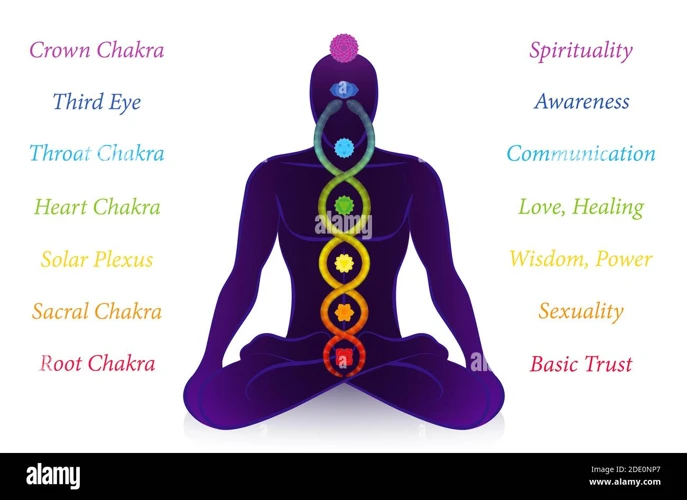
As you delve deeper into the practice of Kundalini Yoga, you may start to notice the prevalence of different symbols throughout its teachings. These symbols serve as visual representations of deeper spiritual concepts, helping practitioners to connect with their inner selves and the world around them. Exploring the meaning behind these symbols can unlock a wealth of knowledge and insight into Kundalini Yoga practice. Let’s take a closer look at the fascinating world of Kundalini Yoga symbols.
The Meaning of Kundalini Yoga Symbols
Kundalini Yoga is rich in symbolism, and the use of these symbols helps practitioners connect with deeper aspects of their spiritual selves. Here are some of the most common Kundalini Yoga symbols and their meanings:
| The Lotus Flower | The lotus flower is a powerful symbol of purity, enlightenment, and spiritual rebirth. Like the lotus, Kundalini Yoga practitioners strive to rise from the murky depths of the material world and blossom into the fullness of their spiritual potential. |
| The Infinity Symbol | The infinity symbol, also known as the lemniscate, represents the infinite nature of the universe and our own infinite potential. It is a reminder that we are more than just physical bodies, we are eternal souls with the power to create our own reality. |
| The Triangle | The triangle is a symbol of the union of body, mind, and spirit. It also represents the three qualities of energy that flow through the body in Kundalini Yoga – the creative or positive energy, the sustaining or neutral energy, and the destructive or negative energy. |
| The Sankh (Conch Shell) | The sankh or conch shell is a symbol of the primordial sound of creation. It is believed to help awaken the divine Kundalini energy and clear any blockages in the chakras. Blowing the conch shell is also a common practice in Kundalini Yoga as it is said to dispel negative energy and bring in positive energy. |
| The Cobra | The cobra is a symbol of Kundalini energy itself, as it is said to lie dormant at the base of the spine like a coiled serpent. When awakened, this energy rises up through the chakras, bringing with it profound spiritual transformation and enlightenment. |
| The Sun and Moon | The sun and moon are symbols of the balance between the masculine and feminine energies within us. The sun represents our active, masculine energy, while the moon represents our receptive, feminine energy. In Kundalini Yoga, it is believed that both energies must be in balance in order to achieve spiritual harmony. |
By understanding the meaning behind these symbols, practitioners can deepen their connection to the spiritual aspects of Kundalini Yoga and use them to enhance their practice.
Common Symbols in Kundalini Yoga
Kundalini Yoga is rich in symbolism, and its practitioners use a variety of symbols to tap into the power of the practice. The following are some of the most commonly used symbols in Kundalini Yoga:
| The Adi Shakti Symbol: | This symbol represents the primal energy of the universe, known as Adi Shakti. It is a triangular shape with a point upward, representing the ascending energy of the Kundalini. |
| The Lotus Flower: | The lotus flower is a common symbol in many spiritual practices, and it is particularly important in Kundalini Yoga. It represents spiritual growth, purity, and enlightenment. The unfolding petals of the lotus flower are also thought to represent the opening of the chakras as the Kundalini energy rises. |
| The Om Symbol: | The Om symbol represents the sound of the universe and is believed to help connect the practitioner with the divine. It is often chanted at the beginning and end of Kundalini Yoga classes and during meditation. |
| The Sat Nam Symbol: | Sat Nam means “truth is my identity” and is a common mantra in Kundalini Yoga. The symbol represents a hand holding a lotus flower, with the fingers representing the five elements: air, water, earth, fire, and ether. |
| The Sun and Moon: | The sun and moon represent the polar opposite energies of Kundalini Yoga, known as Ha and Tha. Ha represents the sun, which is associated with masculine energy and represents activity and outward focus. Tha represents the moon, which is associated with feminine energy and represents inner focus and relaxation. |
These symbols are used to help focus the practitioner’s attention and intention during practice and to connect with the larger spiritual energy that Kundalini Yoga aims to unlock. By understanding and working with these symbols, practitioners can deepen their practice and experience greater spiritual growth and insight.
Mantras in Kundalini Yoga
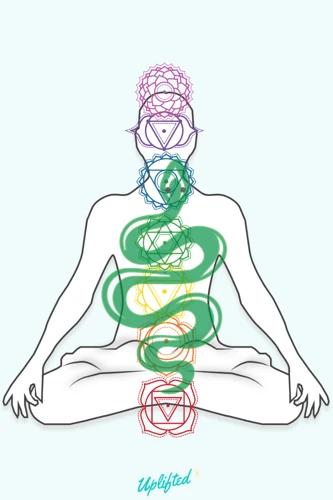
The practice of Kundalini Yoga incorporates various techniques, including mantras. These powerful words or phrases are chanted repeatedly to calm the mind, connect with the divine, and awaken the energy within. Mantras have been used for centuries in spiritual practices, and their efficacy has been proven through scientific research. In this section, we will explore the significance of mantras in Kundalini Yoga, their therapeutic benefits, and the most commonly used mantras in this practice. So, let’s delve into the transformative power of sound and vibration through mantras in Kundalini Yoga!
What are Mantras in Kundalini Yoga?
Mantras are an integral part of Kundalini Yoga. In simple terms, a mantra can be described as a specific sound or phrase that is repeated again and again during meditation or yoga practice. The word “mantra” comes from the Sanskrit language and is made up of two root words: “man” meaning mind and “tra” meaning vehicle.
The purpose of a mantra is to help focus the mind and connect with the spiritual energy within. Mantras are used in Kundalini Yoga to help awaken the Kundalini energy, activate the chakras, and promote spiritual growth.
There are many different mantras used in Kundalini Yoga. Each mantra has its unique meaning and energy. Some mantras are chanted out loud, while others are repeated silently in the mind. One popular mantra in Kundalini Yoga is “Sat Nam,” which means “truth is my identity.”
It is important to note that mantras are not just arbitrary sounds or phrases. They are carefully chosen based on their vibrational frequency and spiritual significance. Each word in a mantra carries a specific energy, and the repetition of the mantra helps to align the practitioner with that energy.
When practicing Kundalini Yoga, it is recommended to work with a qualified teacher to learn the correct pronunciation and meaning of mantras. With regular practice, mantras can be a powerful tool for spiritual growth and transformation.
The Power of Mantras in Kundalini Yoga
Mantras are an integral part of Kundalini Yoga practice. They are powerful sound vibrations that have the ability to transform our consciousness and uplift our spirit. Mantras work on a deeper level than just the conscious mind, they have a profound effect on the subconscious, and even the cells of our body.
Here are some reasons why mantras are so powerful in Kundalini Yoga:
| Reason | Description |
|---|---|
| Sound Vibration | Mantras are made up of specific sound vibrations that stimulate different parts of our body and brain. Each mantra has a unique frequency that corresponds to a different aspect of our being, such as healing, creativity, or prosperity. |
| Focus and Concentration | Repeating mantras helps to focus the mind and quiet the constant chatter of our thoughts. This allows us to go deeper in our meditation practice and access higher states of consciousness. |
| Spiritual Connection | Mantras have been used for thousands of years as a way to connect with the divine. They can help us to tap into our inner wisdom and connect with a higher power or universal energy. |
| Transformation | Mantras have the power to transform our consciousness and shift our energy. They can release negative patterns and habits, and bring about positive change in our life. |
Some popular mantras used in Kundalini Yoga include “Sat Nam”, which means “Truth is my identity”, “Wahe Guru”, which means “Wow, the Divine Teacher is here”, and “Ek Ong Kar”, which means “The Creator and the Creation are one”.
Mantras are a potent tool for spiritual growth and transformation in Kundalini Yoga. Regular practice of mantras can lead to a deeper understanding of ourselves and the world around us, and bring us closer to our true nature.
Common Mantras in Kundalini Yoga
Mantras are an important aspect of Kundalini Yoga, and they can be used to promote healing, clarity, focus, and connection with the divine. Here are some of the most common mantras used in Kundalini Yoga practice:
| Mantra | Meaning |
|---|---|
| Sat Nam | This mantra represents the true identity of the self and is often used at the beginning and end of a Kundalini Yoga practice. |
| Ong Namo Guru Dev Namo | This mantra is chanted to connect with the wisdom and guidance of the divine teacher within, and is often used at the start of a Kundalini Yoga practice. |
| Aad Guray Nameh | This mantra is traditionally used for protection, and is chanted to call upon the protective energy of the divine. |
| Ra Ma Da Sa Sa Say So Hung | This healing mantra is used to promote physical, emotional, and spiritual well-being, and is often chanted during meditation or as a part of a Kundalini Yoga healing practice. |
| Wahe Guru | This mantra represents the experience of gratitude and ecstasy, and is often used to promote connection with the divine. |
| Gobinday Mukunday | This mantra is traditionally used to promote abundance and prosperity, and is often chanted to invoke the energy of the divine as a source of support and abundance. |
It’s important to note that mantras can be powerful tools for transformation, but they should be used with care and respect. It’s recommended that you learn mantras from a qualified Kundalini Yoga teacher and practice with their guidance. With consistent practice, these mantras can help to unlock the spiritual significance of Kundalini Yoga symbols and mantras, and foster greater spiritual growth and awakening.
Chakras and Kundalini Energy
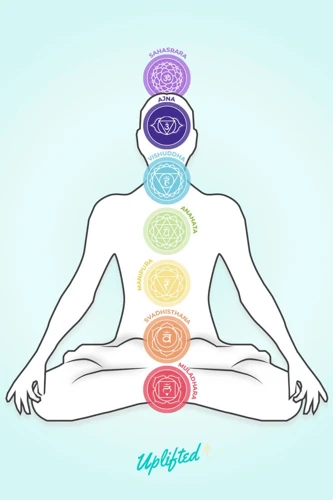
As we explore the ancient practice of Kundalini Yoga, we inevitably encounter the concept of chakras and Kundalini energy. These energy centers, represented by different parts of the body, play a crucial role in the awakening of the Kundalini energy and its ascent through the spinal column. Understanding the chakras and Kundalini energy is essential for anyone who wants to delve deeper into the practice of Kundalini Yoga, as it provides a roadmap for the journey towards greater self-awareness and spiritual awakening. So, let’s explore the fascinating world of chakras and Kundalini energy and gain insights into how they work together to create a transformative experience.
The Role of Chakras in Kundalini Yoga
Kundalini Yoga is a spiritual practice that focuses on awakening and balancing the seven chakras or energy centers in the body. Each of the seven chakras is associated with specific physical, emotional, and spiritual aspects of our being.
The Role of Chakras in Kundalini Yoga
Chakra is a Sanskrit word that means wheel or disc. In Kundalini Yoga, chakras are seen as spinning wheels of energy that govern different parts of the body and aspects of our consciousness. When the chakras are balanced and open, energy can flow freely through them, leading to physical, emotional, and spiritual well-being.
Through various Kundalini Yoga practices, such as kriyas, meditations, and mantras, individuals can awaken and align their chakras, which can lead to a better understanding of their own emotions and thoughts.
To better understand the role of each chakra in Kundalini Yoga, check out the following table:
| Chakra | Location | Associated with | Element |
|---|---|---|---|
| Root Chakra (Muladhara) | Base of the spine | Survival, grounding, physical energy | Earth |
| Sacral Chakra (Svadhisthana) | Lower abdomen | Creativity, sexuality, passion, pleasure | Water |
| Solar Plexus Chakra (Manipura) | Above the navel | Personal power, self-esteem, willpower | Fire |
| Heart Chakra (Anahata) | Center of the chest | Love, compassion, forgiveness | Air |
| Throat Chakra (Vishuddha) | Throat | Communication, self-expression, creativity | Sound/Ether |
| Third Eye Chakra (Ajna) | Forehead, between the eyebrows | Intuition, perception, inner wisdom | Light |
| Crown Chakra (Sahasrara) | Top of the head | Spirituality, connection to the divine, enlightenment | Thought/Consciousness |
By understanding the location, association, and element of each chakra, individuals can use Kundalini Yoga practices to awaken and balance the energy centers, leading to physical and emotional well-being.
How Kundalini Energy Moves Up the Chakras
In Kundalini Yoga, the flow of energy moves from the base of the spine to the top of the head by passing through the seven chakras. Each chakra corresponds to a specific color, sound, and vibration. As the Kundalini energy moves up, it activates and balances the chakras, resulting in physical, emotional, and spiritual benefits.
Chakra Location Color Corresponding Element Meaning
Root Chakra At the base of the spine Red Earth Security, grounding, survival
Sacral Chakra Below the navel Orange Water Creativity, pleasure, sexuality
Solar Plexus Chakra Above the navel Yellow Fire Personal power, will, confidence
Heart Chakra In the center of the chest Green Air Love, compassion, healing
Throat Chakra In the throat area Blue Ether Communication, self-expression
Third Eye Chakra In between the eyebrows Indigo Light Intuition, perception, wisdom
Crown Chakra On the top of the head Violet Cosmic Consciousness, divine connection
The Kundalini energy moves up through these chakras in a specific sequence. Firstly, it activates the root chakra, which represents our sense of grounding and stability. This chakra allows us to feel safe and secure in our bodies and environment.
After that, the Kundalini energy moves to the sacral chakra, which is associated with our creativity and sexuality. It is the place where our desires and passions originate.
Next, the energy moves to the solar plexus chakra, which gives us the power to take action and pursue our goals. It represents our sense of personal power and will.
From there, the energy rises to the heart chakra, which is associated with love, compassion, and healing. It is the place where we connect with others and ourselves.
Moving upwards, the Kundalini energy then activates the throat chakra, which represents our ability to communicate and express ourselves. It allows us to speak our truth and express our authentic selves.
After that, the energy moves to the third eye chakra, which is the center of intuition and perception. It allows us to see beyond the physical world and connect with our inner wisdom.
Lastly, the Kundalini energy reaches the crown chakra, which represents our connection to the divine. It is the place of pure consciousness and spiritual enlightenment.
As the Kundalini energy moves up through the chakras, each one is activated and balanced. This results in physical benefits such as improved circulation, better digestion, and reduced stress. It also brings emotional and mental benefits, such as increased focus, clarity, and a sense of inner peace.
Benefits of Kundalini Yoga

Kundalini yoga is a powerful practice that offers a myriad of benefits for both the body and mind. From increased physical strength and vitality to a deeper sense of mental clarity and emotional balance, the rewards of consistent kundalini yoga practice are numerous. Whether you are new to the practice or a seasoned yogi, it is important to understand the potential benefits of kundalini yoga so that you can fully appreciate the transformative power of this ancient practice. So, let’s delve into some of the key benefits that you can expect to experience when you integrate kundalini yoga into your daily routine.
Physical Benefits of Kundalini Yoga
Kundalini Yoga is a practice that offers a wide range of benefits, including physical ones. Here are some of the physical benefits of Kundalini Yoga:
- Improved flexibility: Kundalini Yoga involves a series of stretches and poses, which help to improve flexibility and increase range of motion.
- Increased strength: Holding poses in Kundalini Yoga builds strength in the muscles, which can help prevent injury and improve balance.
- Better breathing: The focus on deep breathing in Kundalini Yoga helps to expand lung capacity and improve overall respiratory health.
- Decreased stress levels: The meditative aspect of Kundalini Yoga helps to reduce stress levels and promote relaxation, which can have a positive impact on physical health.
- Improved digestion: Kundalini Yoga poses and exercises can help stimulate the digestive system and improve overall gut health.
- Boosted metabolism: Some Kundalini Yoga practices, such as the Breath of Fire, are believed to help boost metabolism and increase energy levels.
- Enhanced immune system: The deep breathing and relaxation techniques used in Kundalini Yoga can help to reduce inflammation and boost the immune system, which can help to prevent illness.
These physical benefits are just some of the many reasons why Kundalini Yoga has become increasingly popular in recent years. Incorporating Kundalini Yoga into your regular exercise routine can have a transformative effect on your physical health and wellbeing.
Emotional and Mental Benefits of Kundalini Yoga
Kundalini Yoga not only has physical benefits but also has emotional and mental benefits. Here are some of the emotional and mental benefits of Kundalini Yoga:
| Benefits | Description |
|---|---|
| Stress Relief | Kundalini Yoga helps in reducing stress and anxiety by calming the nervous system and promoting relaxation. The deep breathing exercises, meditation and mudras in Kundalini Yoga help in relieving stress and creating a sense of calm and well-being. |
| Increased Self-Awareness | The practice of Kundalini Yoga increases self-awareness, helps in exploring the deeper aspects of oneself and develops a better understanding of one’s emotions and thoughts. This helps in creating better relationships and communication with others. |
| Emotional Balance | Kundalini Yoga helps in balancing the emotions by increasing self-awareness and reducing stress. The practice of Kundalini Yoga also helps in releasing negative emotions and creating a positive emotional balance. |
| Improved Concentration | The meditation and breathing exercises in Kundalini Yoga helps in improving concentration and focus. This helps in increasing productivity and achieving goals. |
| Increased Intuition | Kundalini Yoga helps in developing intuition and inner wisdom. The meditation and breathing exercises in Kundalini Yoga helps in quieting the mind and increasing awareness of one’s inner voice. |
| Positive Mindset | Kundalini Yoga helps in developing a positive mindset by focusing on positive affirmations and creating a sense of gratitude. The practice of Kundalini Yoga also helps in releasing negative thought patterns and replacing them with positive ones. |
Kundalini Yoga is a powerful tool for improving emotional and mental well-being. It helps in reducing stress and anxiety, increasing self-awareness, balancing emotions, improving concentration, developing intuition, and creating a positive mindset.
Precautions and Tips for Kundalini Yoga Practice
Kundalini Yoga is a practice that can bring about significant changes in one’s physical, mental, and emotional well-being. However, like any other form of yoga or exercise, it is important that practitioners take certain precautions to ensure a safe and effective practice.
Consult with a qualified teacher or healthcare practitioner: Before starting Kundalini Yoga, it is important to consult with a qualified teacher or healthcare practitioner. They can help you determine whether the practice is right for you, and provide guidance on modifications or precautions based on your individual needs and health history.
Warm up before practice: Just like any other workout, it is important to warm up before starting a Kundalini Yoga practice. This can include gentle stretching, deep breathing exercises, or even some light cardio to get your blood flowing.
Listen to your body: Kundalini Yoga can be a challenging practice, and it is important to listen to your body and not push yourself beyond your limits. If something doesn’t feel right, honor your body and back off or modify the pose.
Stay hydrated: It is important to drink plenty of water before, during, and after your practice to stay hydrated and avoid dehydration.
Avoid practicing on a full stomach: Kundalini Yoga is best practiced on an empty or near-empty stomach, so it is recommended that you wait at least 2-3 hours after eating before starting your practice.
Avoid practicing during menstruation: It is generally recommended that women avoid practicing Kundalini Yoga during their menstrual cycle, as the energy of the practice can be disruptive to the natural flow of the body during this time.
Practice in a safe environment: Make sure to practice in a safe and clean environment, free from any potential hazards or distractions.
Give yourself time to rest and recover: Kundalini Yoga can be an intense practice, and it is important to give yourself time to rest and recover after each session. This can include taking some time to meditate, doing some gentle stretching, or simply taking a few minutes to lie down and relax.
By following these precautions and tips, you can ensure a safe and effective Kundalini Yoga practice that brings about a range of physical, mental, and emotional benefits.
Conclusion
In conclusion, Kundalini Yoga offers a unique approach to spiritual growth and physical well-being through the use of symbols, mantras, and the awakening of energy within the chakras. It is a powerful practice that requires guidance and caution to ensure safety and effectiveness.
By understanding the meanings behind the symbols and mantras used in Kundalini Yoga, practitioners can deepen their connection to the practice and unlock greater spiritual significance.
The chakras play a crucial role in the movement of Kundalini energy, and understanding how this energy moves through the body is essential for a safe and effective practice.
Overall, the benefits of Kundalini Yoga include not just physical health, but emotional and mental well-being as well. However, it is important to approach the practice with caution and listen to the guidance of a knowledgeable teacher or instructor.
With dedication and respect for the power of Kundalini Yoga, practitioners can experience profound transformation and growth on both a physical and spiritual level. So take the first step on this transformative journey and discover the power and potential of Kundalini Yoga for yourself.
Frequently Asked Questions
What is the origin of Kundalini Yoga?
Kundalini Yoga has its roots in ancient Hindu and Tantric tradition, and was introduced to the West by Yogi Bhajan in the late 1960s.
Is Kundalini Yoga a religion?
No, Kundalini Yoga is not a religion. It is a spiritual practice that can be practiced by people of all religions or no religion at all.
Is Kundalini Yoga only for advanced practitioners?
No, Kundalini Yoga is suitable for practitioners of all levels, including beginners. It offers a range of techniques that can be modified to suit the individual’s level of experience.
What are the benefits of practicing Kundalini Yoga?
Kundalini Yoga can bring physical, emotional, and spiritual benefits. It can increase flexibility, strength, and stamina, as well as reducing stress and anxiety and enhancing spiritual growth.
What is the difference between Kundalini Yoga and other forms of Yoga?
Kundalini Yoga focuses on awakening the dormant energy at the base of the spine, whereas other forms of Yoga may focus more on physical postures (asanas) or meditation techniques.
Are there any side effects of Kundalini Yoga?
Kundalini Yoga can sometimes bring about uncomfortable physical or emotional sensations, especially if the energy is not flowing properly. It is important to listen to the body and seek the guidance of an experienced teacher if necessary.
Can Kundalini Yoga be practiced at any time of the day?
Kundalini Yoga can be practiced at any time of day, but it is best to practice in the early morning or early evening when the energy is most conducive to spiritual growth.
What should I wear when practicing Kundalini Yoga?
Wear loose, comfortable clothing that allows for free movement. White is often considered the ideal color for Kundalini Yoga practitioners, but this is not a requirement.
Can Kundalini Yoga be practiced during pregnancy?
It is generally safe to practice Kundalini Yoga during pregnancy, but it is important to consult with a healthcare provider and a qualified Kundalini Yoga teacher who can modify the practice to ensure safety.
Can I practice Kundalini Yoga on my own or do I need a teacher?
While it is possible to practice Kundalini Yoga on your own, it is recommended to seek the guidance of an experienced teacher who can ensure safety and offer personalized guidance and support.

